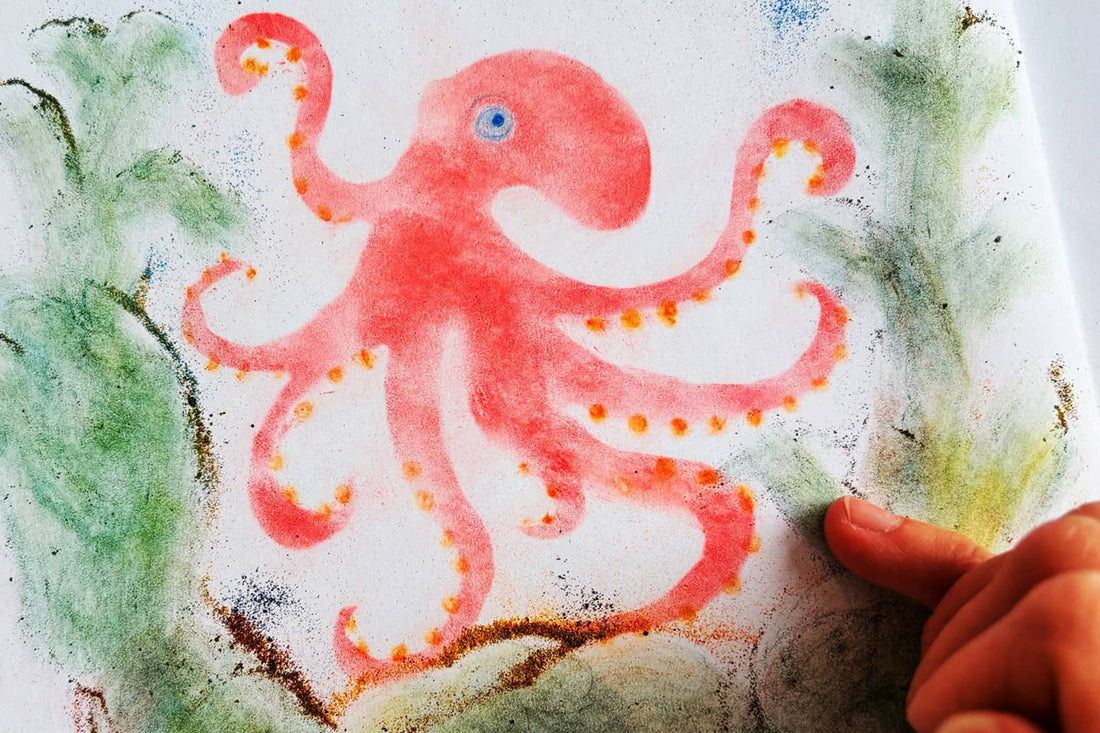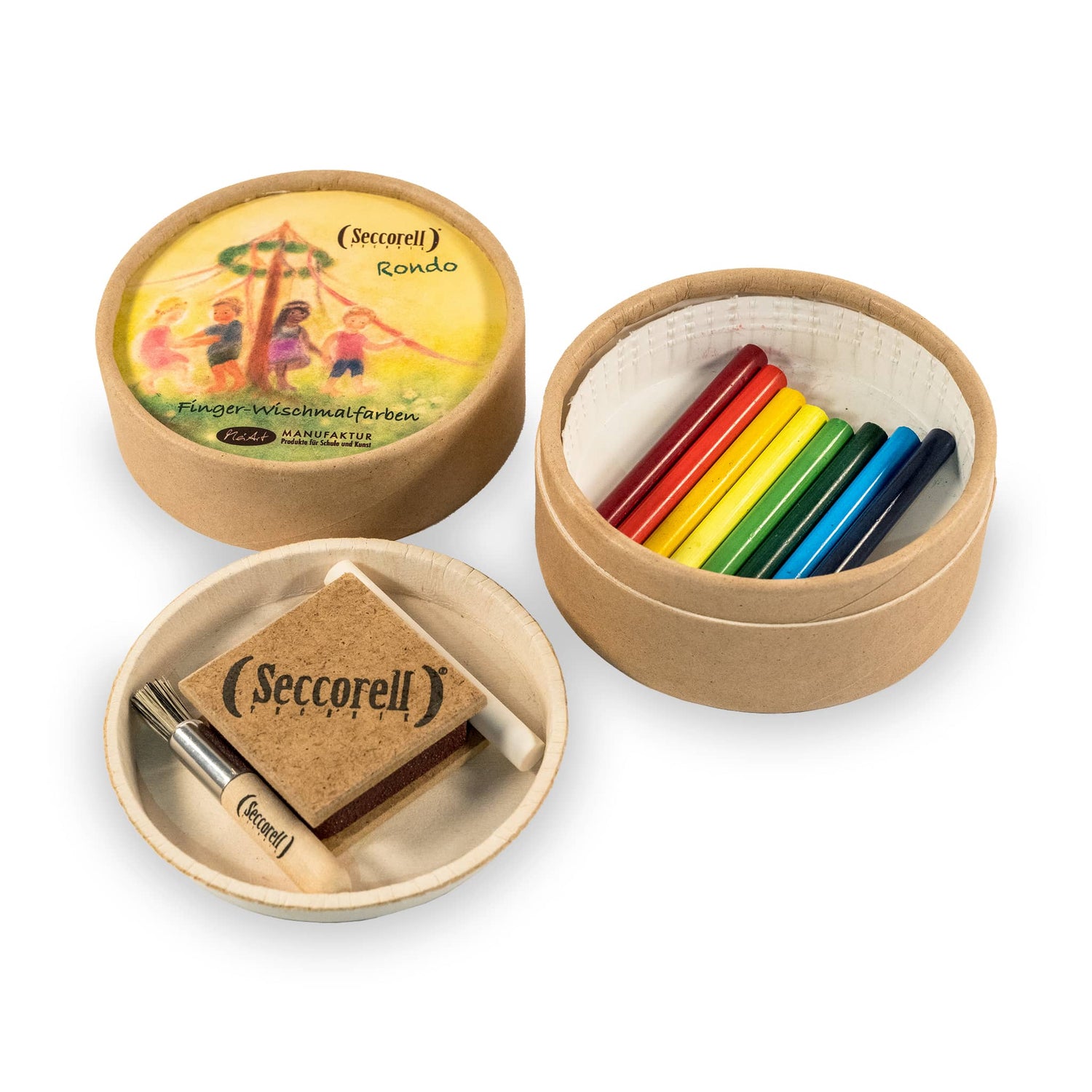
Animal science - 4th grade
Share
Epoch booklet design at the Waldorf School in the 4th grade. Design: Andrea Reiß

The finished epoch booklet picture of a Squid
Step 1

The first step is to make a template: Draw the outline of an octopus on a firm piece of paper - with a round head and curved tentacles. We then carefully cut out the shape with a cutter or small scissors. This creates a negative mold into which Seccorell is later worked.
Step 2

Now place the cut-out template in the middle of a free page in the epoch booklet. Carefully rub some red Seccorell color powder onto the rubbing block and brush it loosely into the cut-out areas of the template. Then gently rub the powder in with your finger to create the shape of the octopus with soft color gradients. If we work the paint in thoroughly, the color surface becomes smudge-proof and acquires a velvety sheen.
Step 3

When the octopus is completely finished, carefully lift off the stencil. Using a soft absorbent cotton pad, we now wipe off any excess paint powder onto an extra sheet of "scratch paper" and rub it in so that no paint powder flies around.
Step 4

If the colored area is smudge-proof, we can now use the eraser stick to lighten individual areas. In this case, we expose the eye of the octopus. To do this, we carefully erase a small oval area in the shape of the head. Light reflections on the tentacles can also be added in this way.
Step 5

Rubbing the paint sticks at an angle on the rubbing block creates a sharp edge - ideal for drawing details and contours. We can use this technique to further elaborate the squid's eye.
Step 6

For the suction cups, we mix a bright orange color on an extra sheet of paper - for this we take some bright red and golden yellow Seccorell powder. Use a cotton bud to make small, round dots on the tentacles.
Step 7

Now we design the water and the underwater world. As we only want to work with the primary colors red, blue and yellow, we mix different shades of green from blue and yellow, which we use for aquatic plants. For darker areas such as rocks or shadows, we mix in some red. The color powder is roughly distributed in the desired areas.
Step 8

The previously distributed color powder is now gently rubbed into the painting ground with your fingers or a cotton pad. This creates soft transitions and the shapes of aquatic plants, stones and water movement become visible. Structure and depth can be created by applying different amounts of pressure and rubbing in different directions.
Step 9

Finally, we use a absorbent cotton pad to remove excess paint powder from the picture. At the same time, the color is gently worked into the paper and the surfaces become more even, softer and more durable.
Step 10

The result is a lively picture of an octopus - embedded in a colorful, moving underwater landscape.
